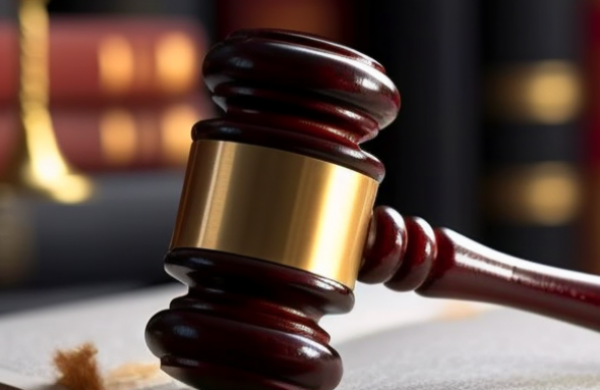Did not receive verification mail? Please confirm whether the mailbox is correct or not Re send mail

IPR Daily
- 2023-12-14 15:40:08
United States: No Magic Word Needed To Determine If The Prior Art And The Patent Are In The Same Field
In Netflix, Inc. v. DivX, LLC, Case No. 22-1138 (Fed. Cir. Sept. 11, 2023) (Stoll, Hughes, and Stark, JJ.), the Federal Circuit held no magic word is required to determine if the prior art and the patent are in the same field.
DivX owns U.S. Patent Number 8,472,792 ("the '792 patent"), which is focused on a feature known as trick play functionality. This feature allows users to fast forward, rewind, and skip scenes in multimedia files by locating specific frames using an "index" chunk. It is important to note that this storage structure uses Microsoft's AVI file format. The patent describes searching through the "index" chunk to find "tag" chunks that reference frames closest to the desired frame. The position of the video frame and any audio referenced by the "tag" chunk is then returned. This functionality is made possible by the placement of the "index" chunk prior to the series of encoded video frames and the first index, enabling trick play functionality before the 'idx1' chunk is downloaded.
Netflix requested a reexamination of the '792 patent, claiming that it would have been obvious based on two references, Zetts and Kaku. The main issue on appeal is whether Kaku qualifies as analogous prior art. Kaku's specification states that it relates to a motion image reproducing device designed for digital cameras. It can read AVI files frame by frame and use an index chunk to display image and sound data. Kaku also discusses compressing and decompressing image data for motion image reproduction. While its main purpose is reproducing motion images from digital cameras, it acknowledges applicability to other electronic devices.
DivX argued in its patent owner response that Kaku is non-analogous art, as it focuses on reproducing content from digital cameras and not on reproducing content from multimedia content streamed over the internet. DivX also argued that Kaku is not reasonably pertinent to the problem the '792 patent solves, which is facilitating trick play functionality in streaming services. Netflix countered in its reply brief by stating that Kaku is analogous art because it teaches about AVI files similar to the '792 patent, which focus on AVI files and even identifies them as prior art. DivX argued in its sur-reply that Netflix failed to demonstrate that Kaku is analogous art because it didn't explicitly identify the field of endeavor or the pertinent problems for either the '792 patent or Kaku. The Board agreed with DivX, concluding that Kaku does not qualify as analogous art. Netflix appealed the Board's decision to the Federal Circuit.
Two separate tests are used to define the scope of analogous art: (1) whether the art is from the same field of endeavor, regardless of the problem addressed and, (2) if the reference is not within the field of the inventor's endeavor, whether the reference still is reasonably pertinent to the particular problem with which the inventor is involved. Airbus S.A.S. v. Firepass Corp., 941 F.3d 1374, 1379 (Fed. Cir. 2019) (quoting In re Bigio, 381 F.3d 1320, 1325 (Fed. Cir. 2004)).
Netflix successfully argued that the Board's requirement for explicit language to identify the field of endeavor was too rigid. The Federal Circuit agreed with Netflix that it was not necessary to use the exact wording "field of endeavor" in their argument. Despite not using the exact wording, Netflix sufficiently argued that both the '792 patent and Kaku relate to AVI file formats. Additionally, Netflix argued that both Kaku and the '792 patent are related to encoding and decoding multimedia files. The Board dismissed this argument, claiming it was exclusive to the issue of whether Kaku is pertinent to the problem the '792 patent is designed to solve. The Court disagreed with this dismissal, stating that evidence and analysis relating to the field of endeavor and pertinence can overlap.
In view of the foregoing, the Court concluded that the Board made an error in determining that Netflix failed to identify the field of endeavor for both the '792 patent and the prior art. The Court vacated the Board's finding regarding the field of endeavor and remanded the case for reconsideration of the obviousness rejection.
A Practice Tip:
Netflix could have potentially avoided costly litigation if it had clearly stated the field of endeavor for both the prior art and the '792 patent in its written remarks to the Board. This case teaches us two important things: first, practitioners don't need to use the exact term "field of endeavor" to satisfy the first prong of the analogous art test, and second, the evidence and analysis for the field of endeavor and pertinence requirements of the analogous art test can overlap.
Source:mondaq.com-Babak Akhlaghi
Editor: IPR Daily-Horace
- I also said the two sentence
- Also you can enter 140words
 TOP IPR U.S. Lawyers 10 & Firms 10 Selection Officially Launched by IPR Daily
TOP IPR U.S. Lawyers 10 & Firms 10 Selection Officially Launched by IPR Daily WIPO Global Innovation Index 2025: China Enters Top 10
WIPO Global Innovation Index 2025: China Enters Top 10 Singapore ranks 5th in the 2025 Global Innovation Index; climbed two spots in Innovation Outputs
Singapore ranks 5th in the 2025 Global Innovation Index; climbed two spots in Innovation Outputs Federal Circuit lacks jurisdiction over award that doesn’t raise issue of patent law
Federal Circuit lacks jurisdiction over award that doesn’t raise issue of patent law


